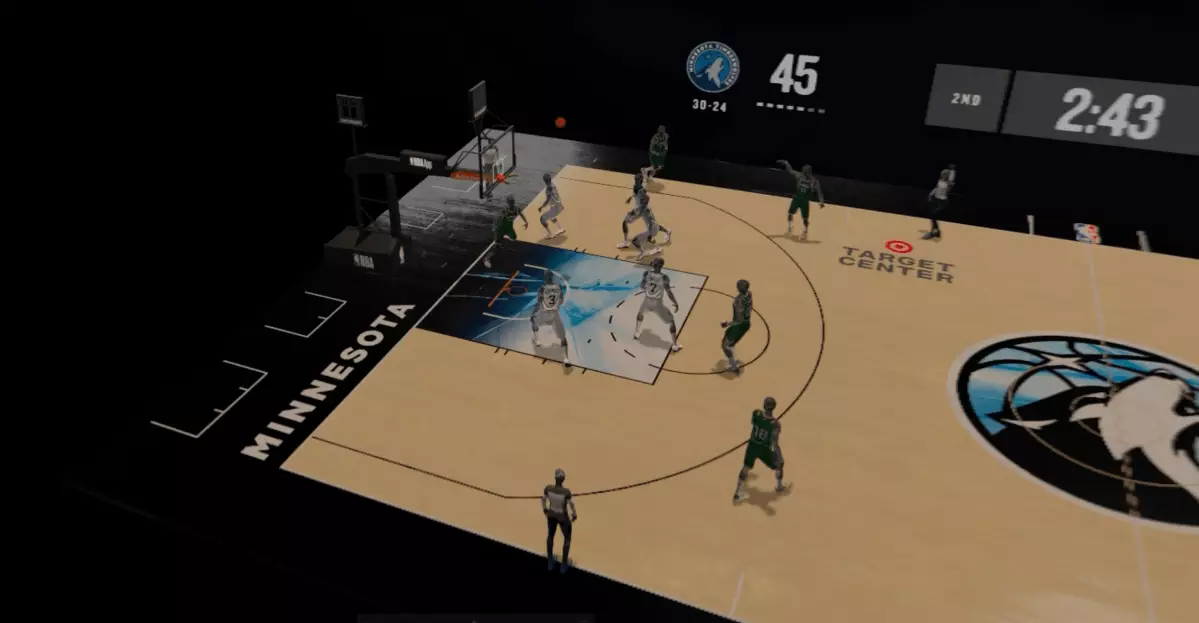The National Basketball Association (NBA) is once again at the forefront of innovation in sports technology. This week, the league has unveiled an exciting new feature integrated into its NBA League Pass: the Tabletop augmented reality (AR) experience for Apple’s Vision Pro headset. This advancement signifies a monumental shift in how fans interact with live games, promising to enhance their viewing experience by immersing them more deeply into the action.
Tabletop allows fans to conjure a virtual basketball court right in their living rooms during select live games. As NBA games unfold, digital avatars representing real players move in sync with the live action on the court, showcasing passes, shots, and other game dynamics. This feature is an exclusive perk for NBA League Pass subscribers, meaning it caters primarily to the most dedicated fans who seek an enriched experience as they cheer for their teams from afar.
The technology utilizes real-time data to update the on-screen avatars, providing an engaging alternative to traditional viewing. Fans can see their favorite players in action, albeit in digital form. However, as with any cutting-edge technology, some early adopters have reported minor delays, such as a 45-second lag behind audio commentary, which can detract from the immediacy of live sports. Early testers have already experimented with a sync option that reduced this delay significantly, hinting at the developmental flexibility of this AR experience.
The avatars in the Tabletop experience, while lacking the individual likenesses of the actual players, are designed to reflect them through identifiable jersey colors and names. Each player is represented by either a cartoonish cell-shaded model or a robotic avatar, adding a playful element to the serious nature of competition in the NBA. The design choice embraces a blend of realism and creativity, catering to general audiences and younger fans who may find the game more approachable through animated representations.
It’s important to consider the implications of using avatars rather than actual player likenesses, especially in a league that emphasizes branding and fan connection. The decision raises questions about player representation and virtual identity, but for many fans, the chance to see their team efforts visualized in AR may be enough to overcome any initial hesitations.
Notably, the Tabletop feature opens new doors for fans who follow local-market games that may not be available for video streaming. This ability to access AR representations of games that would otherwise be out of reach further blurs the lines between local and national fandom, finally providing a level playing field for all subscribers. The enhancement of the fan experience is commendable, but it does highlight the limitations of current broadcasting rights and the ongoing challenges many leagues face in providing equitable access to all fans.
NBA’s exploration of mixed reality technology is not new, yet the Tabletop feature is perhaps the boldest step taken since the league first began to experiment with similar concepts. Its resemblance to the now-defunct Lapz Vision Pro app, which offered an immersive experience into Formula 1 races, demonstrates an evolving trend towards interactive viewing experiences in sports. This not only enhances engagement but also fosters a sense of community among fans who might otherwise remain isolated in their viewing habits.
The interactive viewer does more than watch; they participate in a new form of storytelling that involves collaboration with technology in their sports culture. This strategy may well set a new standard for how sports leagues think about consumer engagement in the digital age.
As the NBA prepares for its marquee events, including the highly-anticipated All-Star weekend, the anticipation surrounding the Application of AR technology grows. The league’s commitment to pushing boundaries could redefine how we experience sports entertainment in the years to come. While the current technology is in its early stages and may still be refined, the foundation has been laid for a future where augmented reality becomes routine in the sports industry.
The NBA’s new Tabletop feature is an innovative leap that could not only enhance fan experiences but potentially reshape how sports are consumed and celebrated across the globe. As technology progresses and becomes more accessible, we can expect a revolution in the way that fans engage with their favorite teams and athletes. The intersection of sports and technology is here, and the journey has only just begun.

